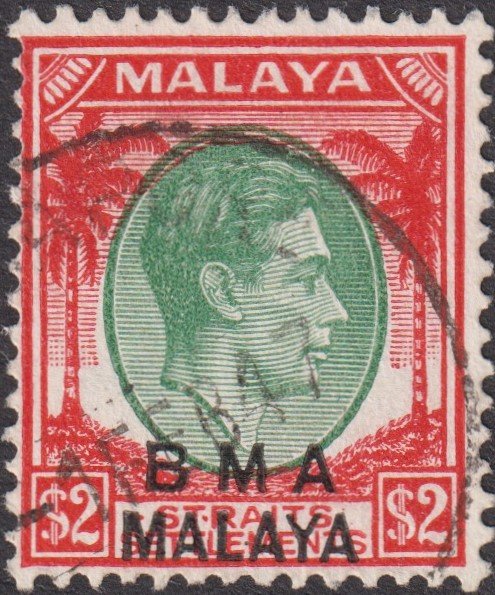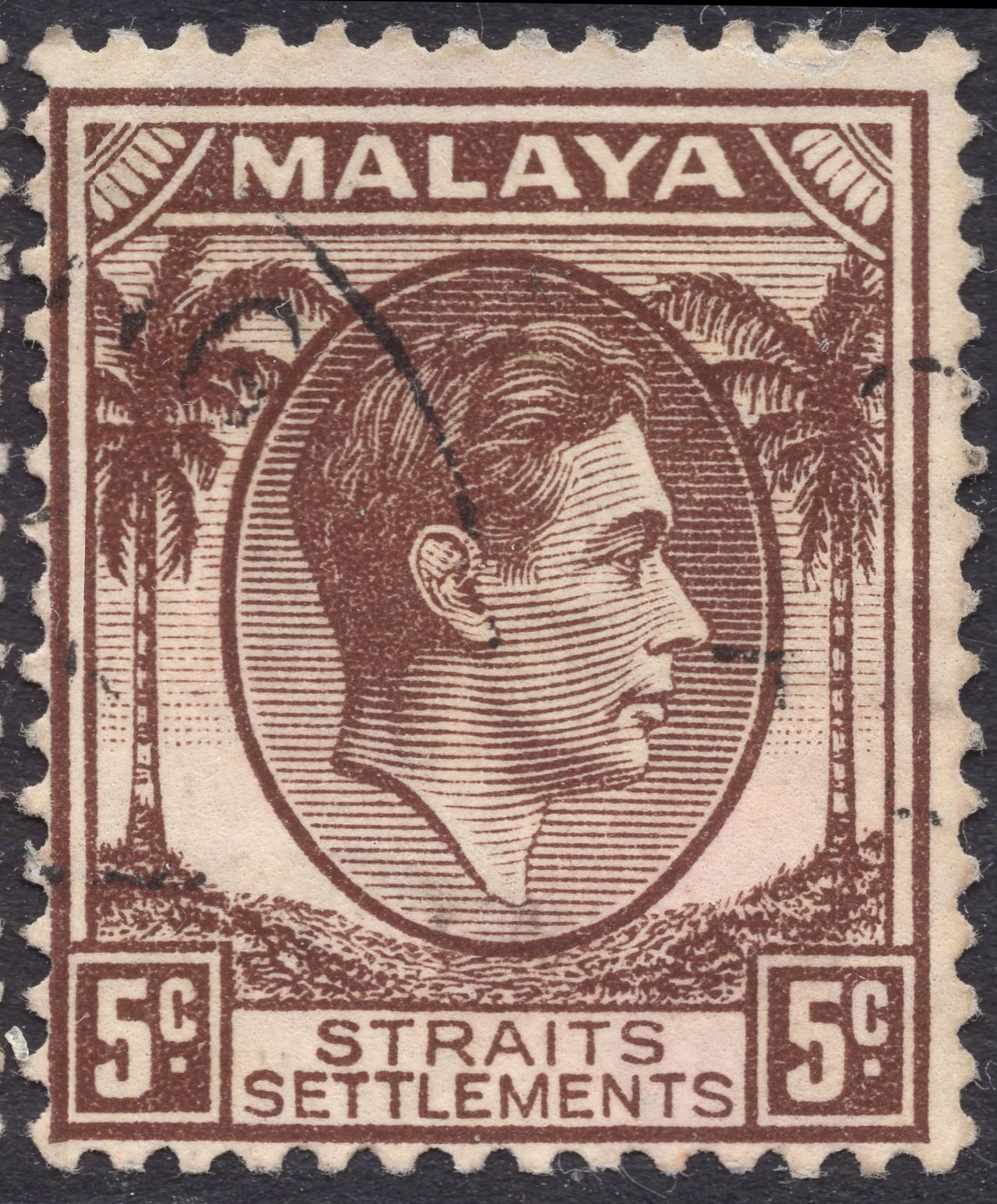Hale R, 1991 The Malayan Philatelist 32:44.
Tyre, N. & Stanway, L. C. 1991. Straits Settlements KGV & KGVI
"MALAYA" stamps, and "BMA MALAYA" stamps: dots between letters of
"STRAITS". The Malayan Philatelist 32:71-72.
Glover, W. 1994. Straits Settlements: KGV & KGVI "MALAYA"
issues-dots between letters. The Malayan Philatelist 35:44.
Robinson, G. S. 1994. Straits Settlements 1936-41 issues, and the
BMA MALAYA issue: dots between letters. The Malayan Philatelist 35:80.
KGV
2c STR RCB, GSR STR RCB S.TR RCB STR NT 4c STR NT, WG, RCB STR NT
5c S.TR RCB 2x78 6c STR RH 25c STR RCB 2x, NT 30c STR NT 40c STR NT $2
STR LCS
KGVI
2c STR NT 5c ST.R LCS 8c STR NT 10c STR RCB 5x STR RCB 2x ; WG STR
RCB 2x
KGVI BMA
1c S.TR RCB STR LCS 2c STR LCS, NT S.TR NT S.TR NT STR RCB 10c STR
WG STRAITS RCB 15c swp STR RCB !!! 25c STR LCS, NT, WG |STRAITS: RCB
!!!! 25c striated STR NT S.TR NT S.TRAITS: NT
$1 STR LCS, NT, WG S.TR WG S:TR RCB $2 STR NT S.TR NT STR NT, GSR
$5 STR LCS, NT, GSR STRAITS NT
The Wharfedale is one of a special family of presses-the 'stop
cylinder' presses. The forme moves backwards and forwards on a
flat-bed, and the impression is made by a rotating cylinder. Paper is
gripped on the cylinder. In common with proofing presses, the force of
the impression is delivered in a thin strip (just where the cylinder
hits the forme). This allows for a greater precision of impression.

